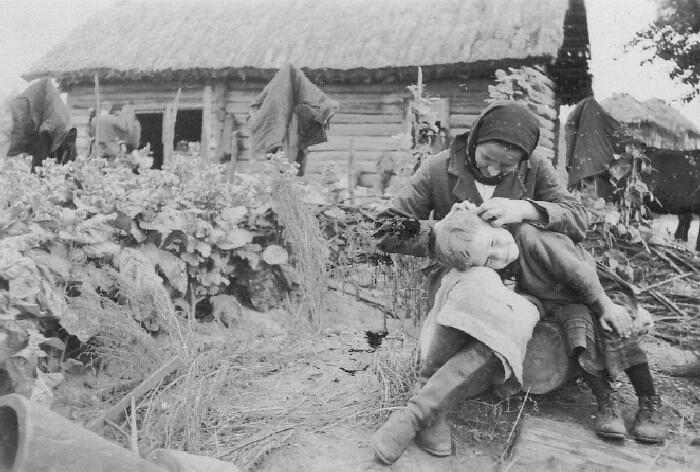
Figure 1.--Here a Soviet peasant mother picks lice out of her little boy's hair. We are not sure why a German soldier would have taken this photograph. |

|
We are not entirely sure of the motives of the German soldiers who took these photographs. The fact that they mostly took photographs in rural areas of the peasantry, commonly of ragged men, women, and children suggests that they were recording the poverty and backwardness of the society that they were destroying. Of course some of this was a result of Stalins's collectivization and the diversion of resources from the countryside to urban workers industrializing the Soviet Union. Certainly novelty was a factor. Some of these photographs seem rather like those a tourist might take when viiting a poor country. Coming from developed Germany they would not have been familiar with such backwardness and poverty. Novely encourages photography. These images also seem to confirm many of the basic NAZI prejudices about their superiority and Soviet/Slavic backwardness. Eome German soldiers saw themselves embarked on a great crusade to remake the world and wanted to document their accomplishments. We believe that few of the soldiers taking these pivtures were aware of Hitler's plans for the Slavs, although most probably knew that Jews were being killed.
A Russian reader provides us his take on these images. "No doubt, there're tons of pictures made by Germans on the occupied Soviet territory. But always these photos were made with a singe and plain target -- to show how poor, miserable and silly barabarians are these smelly Russians, their women and children. Well, good for civilized, clever, beautiful and wealthy Germans. Later for Russian photographers there were almost none to take photos about in that "Schone Deutschland", 'cause our soldiers (including my grand dad) were a bit... just a bit ... angry."
We agree with our Russian reader that many of these images show poverty and ragged children. Clearly some of the German photographers were attracted to such scenes. The images are not, however, NAZI propaganda images taken by German military photographers. These are images taken by ordinary German soldierts who took their personal cameras with them to war to record their experiences and exploits. They did not take images the Government ordered them to take. Rather they took photographs of what they found interesting, what captured their attention and appealed to them as important to record. Thus the photographic record they created provides an insight into their mind set. It also provides and uncenored view of the Ukraknian countryside in the wake of Slalin's collectivization and agricultural policies. Images like this were not allowed in the Soviet Union. What the Germans captured was the reality of Soviet rural life at the time. These pictures were taken at the onset of Barbarossa and thus show what life was like for the Soviet peasantry at the time.
One thing we do not notice in these German photographs is very many images from Soviet cities. We are not ebntirely sure why this was. There are a number of possibilities. Perhaps the military regulations about personal photography was more strictly enforced in the cities. Perhaps the soldiers saw less of interest or had little free time in the cities. Or maybey there was more fighting there. Or the bulk of the Wehrmacht was deployed outside the cities. Here we just do no know. Perhaps readers will have some idea.
Navigate the Boys' Historical Clothing Web Site:
[Return to Main German war photography page]
[Return to Main Barbarossa German photography page]
[Return to Main Great Patriotic War page]
[Return to Main World War II country page]
[Introduction]
[Activities]
[Biographies]
[Chronology]
[Clothing styles]
[Countries]
[Bibliographies]
[Contributions]
[FAQs]
[Glossaries]
[Images]
[Links]
[Registration]
[Tools]
[Boys' Clothing Home]
